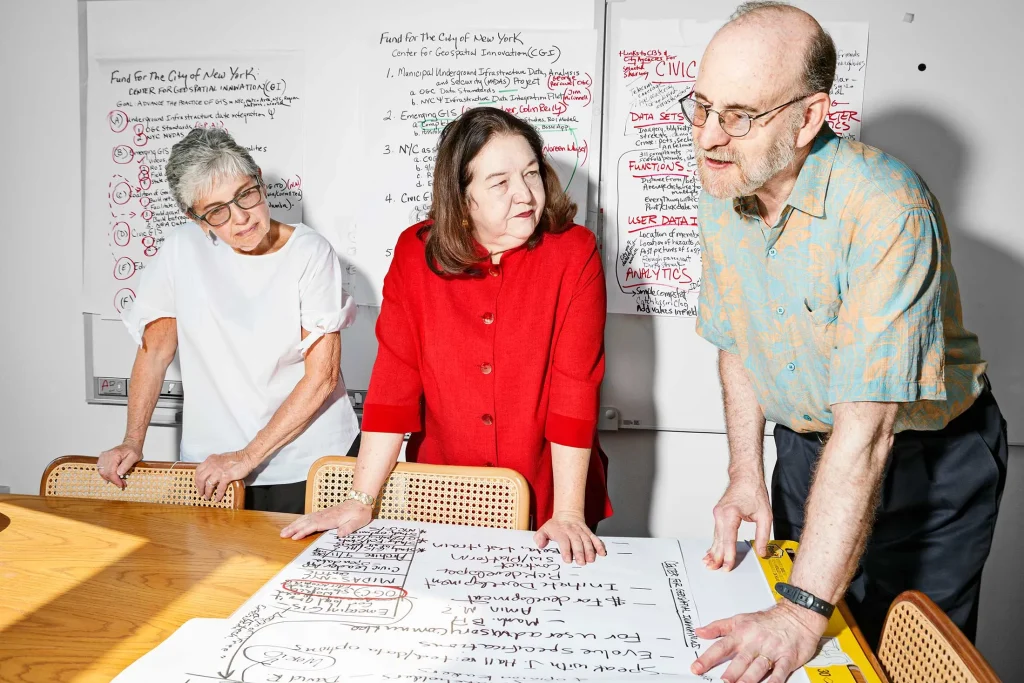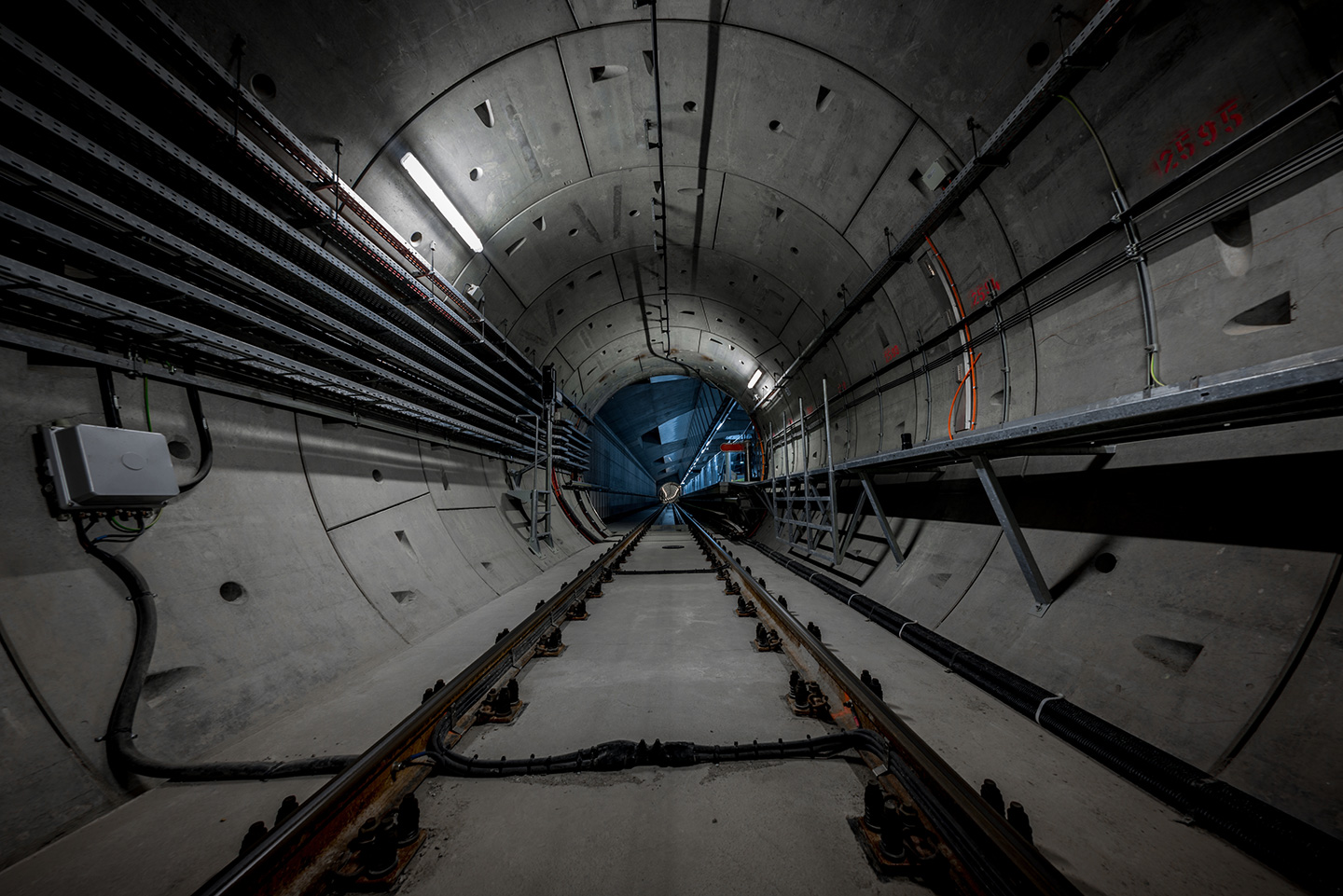When we talk about interoperability, we often frame it as a technical challenge – one of aligning systems, standards, and data. But at the heart of every breakthrough is someone who saw the problem early on – long before it made headlines or policy agendas.
Few people embody that better than Alan Leidner.
A geospatial consultant, longtime public servant, and early champion of emergency mapping in New York City, Alan’s work following 9/11 exposed a critical gap in urban data infrastructure: we had no reliable maps of what lay underground. That experience didn’t just shape emergency response—it helped spark a global movement toward smarter, more interoperable underground data systems, including the creation of the MUDDI Standard through OGC.
In this Q&A, Alan reflects on the real-world challenges that drove his decades of advocacy, the power of standards grounded in use cases, and what it takes to build trust and momentum across government, industry, and utilities.

Q&A with Alan Leidner
Geospatial Consultant | NYC GISMO President Emeritus | OGC Liaison | Member, National Geospatial Advisory Committee
Alan Leidner has been a champion of geospatial data innovation for over three decades. His leadership in New York City’s emergency mapping efforts following 9/11 helped expose critical gaps in underground infrastructure data – gaps that would later shape the development of OGC’s MUDDI Standard. A long-time advocate for geospatial standards, Alan continues to advise governments, geospatial communities, and policymakers on improving resilience, data interoperability, and urban planning through smarter underground data management.
What led you into the geospatial field, and how have your roles in government and emergency response shaped your understanding of its importance?
I entered the geospatial world early in my career at the New York City Department of City Planning, where I was answering public inquiries using paper maps. This experience, combined with my background as a Boy Scout trained in wayfinding, sparked a lifelong passion for maps and spatial information. Later, at the Department of Environmental Protection, I saw first-hand how fragmented infrastructure mapping – different departments using different base maps – created chaos. It became clear to me that a unified, accurate spatial framework was essential for effective urban management.
My time in emergency response, especially after 9/11, deepened this understanding. The absence of reliable underground data during that crisis made it painfully obvious: geospatial data isn’t a luxury, it’s critical infrastructure for a functioning, resilient city.
Following 9/11, you became a strong advocate for mapping underground infrastructure. What specific challenges during that time made the lack of subsurface data so urgent?
After the World Trade Center collapsed, underground fires burned for weeks, posing risks to critical infrastructure buried beneath the site. Yet we had no consolidated maps of what utilities lay below. Different agencies maintained their own records, if any existed at all, and those records often used incompatible coordinate systems.
It took us over ten days to piece together a working map of the underground environment, time we simply didn’t have. In one chilling moment, we learned that a 200,000-pound tank of freon was buried under the site; if heated, it could have produced phosgene gas – a deadly chemical weapon. We needed to locate that tank quickly to prevent a secondary disaster. This and other experiences made it clear that cities must have accurate underground data ready before emergencies strike.
The effort to map New York City’s underground systems has spanned over two decades. What were some of the key challenges and turning points in that journey?
One of the greatest obstacles has always been fragmented data ownership and fears over data security. Utilities were often reluctant to share information, citing concerns that consolidated maps could expose vulnerabilities. This tension stalled progress for years after 9/11.
A major turning point came when I reached out to the Open Geospatial Consortium (OGC). I asked: could we create an international standard that utilities could trust and adopt? That question set in motion collaborative efforts involving New York City, Ordnance Survey, Singapore, and others – ultimately leading to the development of the MUDDI Standard.
You’ve played a leadership role in developing the MUDDI Standard. What problems was MUDDI designed to solve, and how does it support underground data sharing and integration better?
MUDDI – the Model for Underground Data Definition and Integration – was designed to tackle exactly the problems we faced: siloed data, inconsistent formats, and the inability to bring information together when it mattered most.
It provides a common, structured way to describe underground assets like pipes, cables, and tunnels, including their geometry, attributes, and temporal information. Importantly, MUDDI is designed to work with real-world systems like GIS, BIM, and digital twins. It reduces the need for costly, one-off data conversions and allows different stakeholders to collaborate on a shared, reliable view of the underground.
How did real-world experience, especially in New York, shape the development of MUDDI? Why is grounding technical standards in practical use cases so critical?
MUDDI wasn’t built in a vacuum. From the start, it was anchored in real-world use cases: emergency response, routine excavations, major capital projects, infrastructure maintenance, and now digital twin applications.
In New York, we learned the hard way how disasters, construction delays, and public safety risks all stem from not having accurate underground data. By grounding MUDDI in these practical needs, we ensured it wasn’t just technically correct, but operationally valuable – something people could actually use to solve real problems.
What does meaningful collaboration look like in the standards-setting process, particularly when working across government, industry, and civil society?
Successful collaboration starts with trust, shared purpose, and a willingness to listen across sectors. When we developed MUDDI, our group included city agencies, utility companies, national mapping organizations, and international partners. Everyone had different needs and concerns, but we kept coming back to the same question: what do we need to know to protect lives and infrastructure ?
Relationships mattered. So did persistence. Building consensus took time, but it was essential to create a standard that everyone could embrace.
What advice would you offer to cities or utilities looking to adopt underground data standards like MUDDI? Where should they begin?
First, recognize that underground data is not optional, it’s foundational . Start by building an inventory of what data exists, where the gaps are, and who owns it. Bring stakeholders together early and make the case for why interoperability benefits everyone – from safer construction to better emergency response.
Adopting a common model like MUDDI saves time, money, and lives. Start small if needed – pilot projects can demonstrate value quickly – but keep your eyes on building a full, integrated view of the underground environment. The payoff is resilience, safety, and smarter growth for the future.
Join the movement:
Join OGC and participate in OGC working groups and testbeds
Share your use cases, pain points and wins
Let’s make data trust visible, measurable, and shared—so that everyone can make better decisions with confidence.
This blog is part of our “10 Ideas in 10 Weeks” series, highlighting bold ideas and real-world innovation across the OGC community.
Explore previous insights:
- Week 1: Navigating the Era of Synthetic Imagery—Why Trust in Geospatial Data Matters
- Week 2: From Data to Decisions—Aligning for the Space Economy
- Week 3: From Wildfires to Water Scarcity—OGC’s Open Science Demonstrator Is Turning Research into Real-World Impact
- Week 4: How Esri’s Adoption of 3D Tiles Accelerates the Open Geospatial Future
- Week 5: What Lies Beneath—The Standard Making Underground Infrastructure Smarter and Safer
- Week 6: The OGC Simple Features Standard—The Silent Backbone of Modern Mapping
- Week 7: The Vital Role of Undersea Cable Infrastructure and the Importance of Geospatial Standards
- Week 8: The Shift That’s Reshaping Geospatial—and Why It Matters Now
- Week 9: The “All or Nothing” Myth of Interoperability.
Follow us on LinkedIn for more stories about the people, projects, and standards shaping the future of geospatial.
